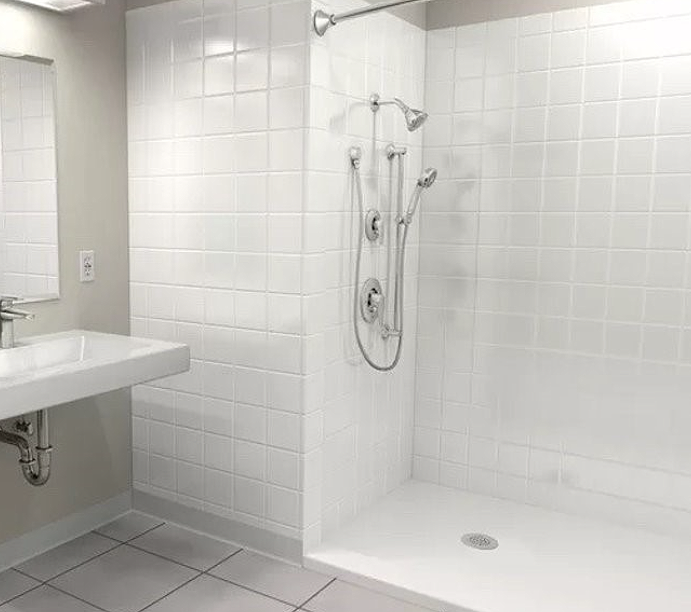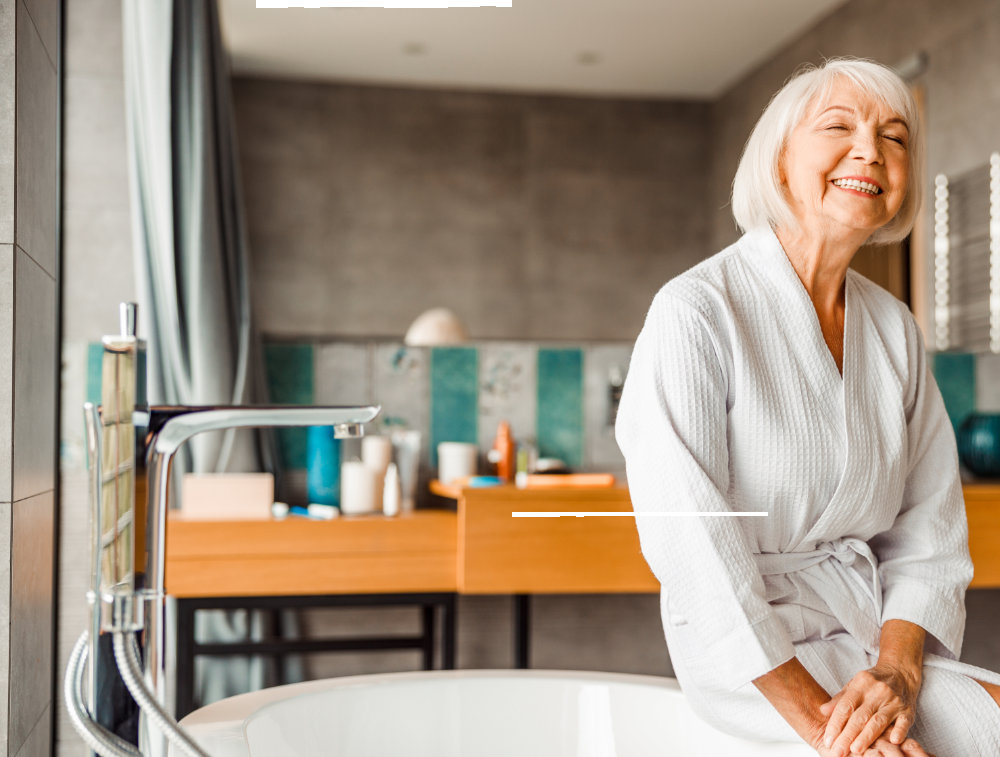The bathroom is one of the places in the home where the most accidents happen. In fact, the bathroom is where the most people slip and fall, which can lead to serious injuries and conditions. But the bathroom is a place where other hidden dangers lurk, things that typically we take for granted. Here is a good list to keep in mind when thinking about safety-proofing your bathroom, for a child or an aging adult, or even for yourself. Along with each area of your bathroom, we include some easy steps to take to remedy a problem before it happens.
Bathtubs and Showers
Getting in and out of a traditional bath tub can be a problem, especially if the person getting in and out of the tub has problems with their balance or with their legs. Even a small lip at the bottom of a shower (which is necessary to keep water from spilling out onto the floor) can be a tripping hazard. Not only can a wet floor lead to someone slipping and falling, but soap and water inside the tub or shower could be a problem.
- Install a walk-in tub, which will be easier for someone to use, and decrease the possibility of someone slipping and falling.
- Install non-skid mats on the floor, or, better yet, install a stool or grab bars inside the tub or shower.
- Install a bench or stool in the shower or tub, which will also help diminish the chance of someone slipping and falling.
- Install a handheld shower head.
- Using liquid soap instead of bar soap can also reduce the chance of someone slipping and falling, because they will not have to bend over to pick up a bar of soap that falls to the bottom of the tub or shower.
Electric and Appliances
Once you’ve addressed the bath tub and shower in the bathroom, turn your focus to other areas. Another safety hazard is the electrical system used in the bathroom. Plugging in appliances like hair dryers and curling irons near a source of water can lead to possible electrocution and shock. Make sure that ground fault circuit interrupters are installed in every outlet in the bathroom.
Other Safety Options
If mobility is an issue, install a commode that accommodates someone with a limited range of motion. You can also install grab bars and/or handles on the walls near the toilet. If you do, make sure the grab bars and/or handles are installed in wall studs, to make sure they are as sturdy as possible. There are also toilet lifts you can buy, elevated toilet seats, and products that are removable so the person can use them on any toilet they may need to use.
Another area to look into is the temperature of the water in the home. Anti-scalding shower heads and faucets (for sinks, tubs, and showers) will help ease the concern of someone getting burned. These devices are simple to install. You can also set the temperature of the water to make sure it will not burn someone.
Protecting your loved ones in the home is simple to do, if you think about all the ways in which someone can get hurt. Something as simple as a walk-in tub may be your best option, as it may address several areas of concern at once. Find the option(s) that work best for you and your loved ones.




